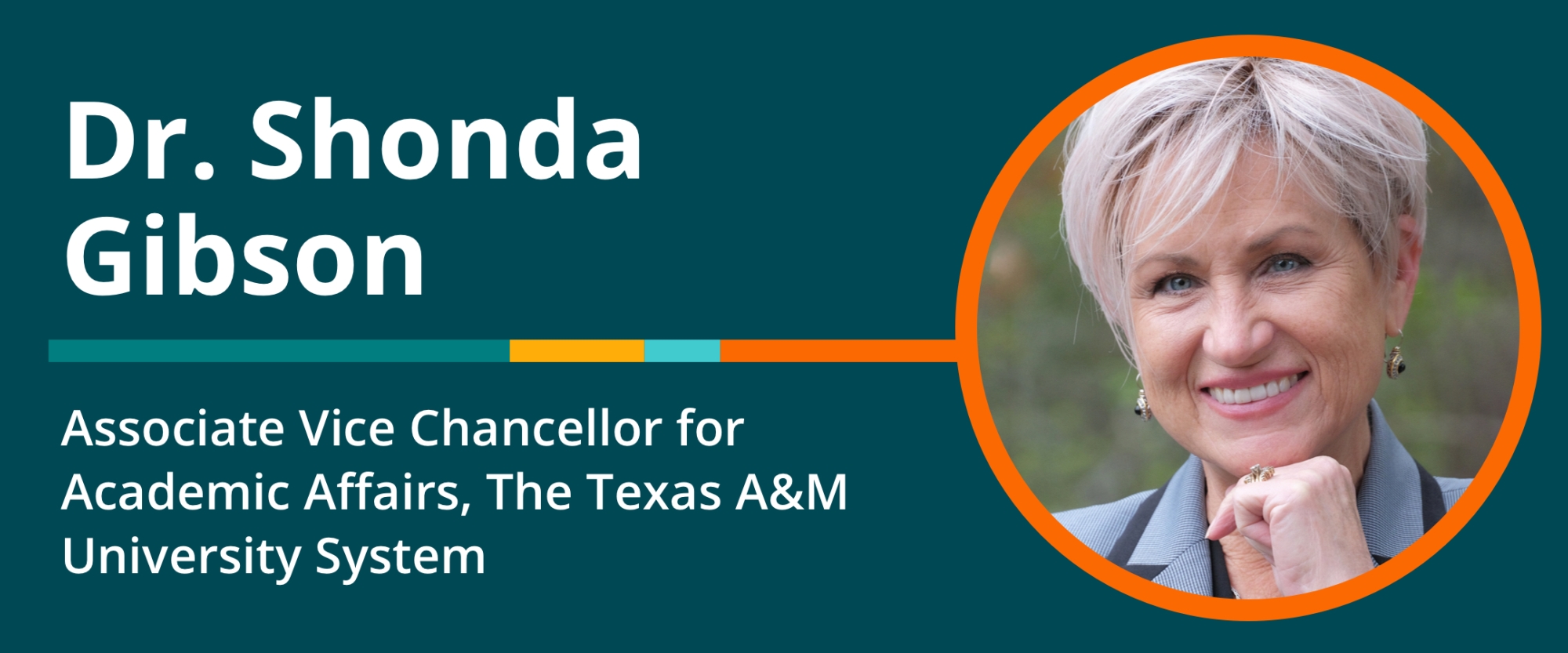Institutions of higher education come in many sizes, and the University Innovation Alliance (UIA) is interested in hearing from every kind of leader. On this Weekly Wisdom Podcast, we spoke with Dr. Shonda Gibson, Senior Associate Vice Chancellor for Academic Affairs at the Texas A&M University System (TAMUS). She discussed what America needs most from higher education, the operational challenges and rewards for a major university system, how to best serve returning students, and humility and perspective as leadership attributes.
A Road Map for Higher Education Improvement
With her background in organizational effectiveness, Dr. Gibson was able to share what the U.S. needs most from higher education:
“Today's learners require innovation, and solutions we were using yesterday are not effective anymore. As leaders, we can't gloss over the data showing our pain points and failures. I think by listening to the national conversation out there, we learn and grow from it.”
She explained her own approach:
“My biggest strategic focus right now is on faculty impact. The emphasis must be on professional development to handle innovation, because if we don't teach faculty how to enhance teaching excellence and use innovation, we've failed as institutions. For example, when do we think faculty are going to create time to figure out how to use AI in teaching a class they've taught very effectively for the last ten years? Leaders need to recognize that faculty are the key drivers of change inside the classroom and in the curriculum. That's where the ideas and the connection to the market are.
“How do we teach them to include high-impact practices and think about students they're going to work with in a new academic program? When your whole experience in higher education was that you went to a university as an 18-year-old, had a normal four-year experience, and then were successful, you didn't have all the barriers and challenges that many of today’s students have. Now you're trying to create a system that serves these students. We've just built this circular logic that doesn't work.
“The other piece of this discussion is department leaders. Those are the key people. I think there's research saying that 80% of campus decisions are made by department chairs. Who's working with them to serve a different population and grow into what America needs in higher ed in the future?”
Putting Students First
While Dr. Gibson spent much of her career within the TAMU System, she’s studied student success programs nationwide. She spoke about operational differences from one system to the next:
“Some are top-down. Some are loosely organized. I like to think of our system as a membership of willing organizations. We've built out communities of practice focused on specific functional areas. I'm super lucky because I have a lot of great people who understand that there's other great people at lots of campuses who have gone through similar challenges and are encountering the same barriers, and if we put our heads together, we can come up with better solutions than if we're trying to do it by ourselves. I think other systems can position themselves to do the work, but it takes building a culture where that environment supports that type of engagement.”
She noted that it can be divisive for institutions within a system to focus too much on their differences:
“We’re all dealing with way more common problems and issues. In Texas, I'm working with 11 universities that range from 2000 to 80,000 students, campuses focused on two-year completion all the way to multiple-doc-awarding campuses. Every geographic region has unique things that present unique challenges. But the bottom line is this. In Texas, we have 4.2 million people that have some college and no degree. That's what drove me into this work: how can we have that many people in a state who started something and didn't finish it? What can we do better? Where do we have issues? How are we fighting for 4.2 million students?
“We broke down some data around enrollment management. We looked at five years and got a snapshot of how many students came to us and then left. To get those 80,000 completed to some sort of credential, we could open a whole new university. We need to be fighting for the students that we're just not serving well in the first place, so let's focus on where we have these common issues.”
Elevating Institutional Collaboration
Dr. Gibson acknowledged that competition for limited resources is all too common within university systems:
“Departments and entire institutions are being very, very guarded in the area they're serving. So, if we don't do it right at the system level, pulling people together to key up collaboration and cooperation, we can actually drive more competition where people just refuse to work together.
“There's always going to be a need to focus on building and serving a strong freshman class that wants to come to your university for four years and have that unique freshman experience. But then you've got this other pocket of students that are forgotten at most campuses. They need re-skilling, retooling, setting up for social and economic mobility. Our universities haven't been positioned to take care of that student, and that's where we see the biggest opportunity.
“Six years ago, any enrollment manager would probably say, ‘We have a specific focus on building a strong freshman class.’ We have made huge strides and have a lot of work we can still do to clean up that pathway into our university. And then we've got some great stuff going on in grad recruitment, enrollment. There's our three real pockets where we focus.
“And I think the fourth one that had little to no attention was recovery of students who had previously come to us, stopped out, and need to complete a degree. We've done intensive work in this space over the last five years and did a deep dive investigating our own policies, procedures, practices, and barriers. If you look at a university website today, you'll find a button that says, ‘I'm a returning student.’ Six years ago, you wouldn't have found that. I have a university right now that would've had declines in enrollment had they not been focused on this population over the last two years. That’s one of my proudest things we've worked on across our system.”
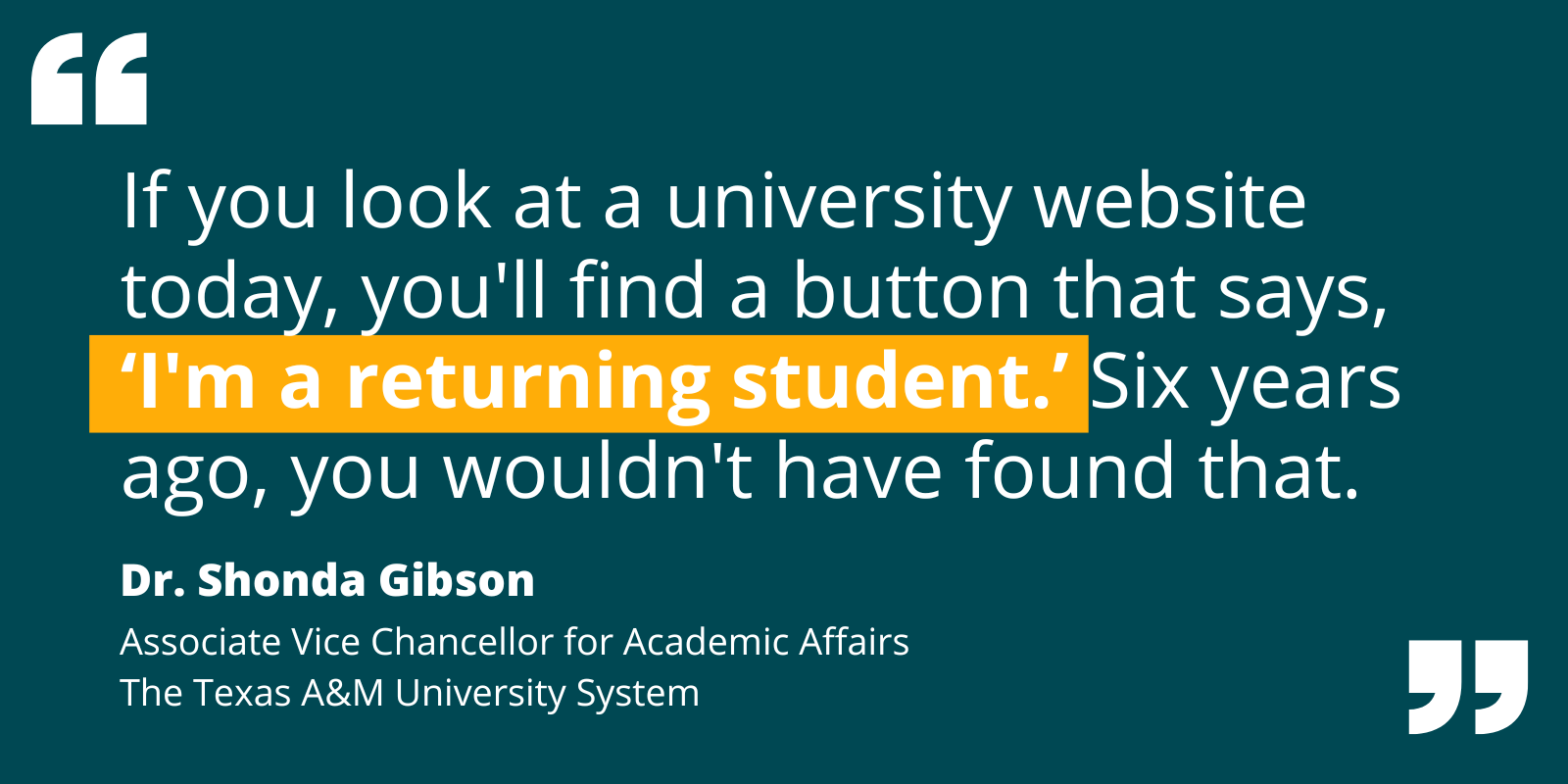
Dr. Gibson suggested that adopting a mindset of continuous improvement begins with a clear-eyed look at ingrained structural problems and navigating away from them without blame or shame:
“Focusing on improvement eliminates that desire to just abandon ship because it's too hard to deal with. As a leader, the hardest part is putting your ego to the side and saying, ‘This is not about me.’ It's about bringing 11 people to the table, getting them to find their voice, and positioning them where they can then inspire others to continue doing this work.”
Career Advice and Recommended Reading for Higher Ed Leaders
Dr. Gibson shared some wisdom that she’s found valuable in her own career:
“When I first started in corporate management, one of my bosses said, ‘Avoid solution-itis.’ Don't come in with a solution right off the bat. Dig deep for the root causes of whatever is going on, be willing to expose that, and then let's tackle it, blow it up, and rebuild it. As a leader, you won’t always be the one saying, ‘I've got the best idea, let's do this.’ And I've tried hard to keep that close as I've grown and moved into different positions.
“Moving into higher education, I had a supervisor and mentor, Mary Hendrix, Vice President of Student Access and Success at Texas A&M University Commerce. She told me the most amazing thing about working at a university is that you're around a lot of really smart people, and the way you can distinguish yourself is to be kind and always keep the students at the top of your mind."
As for book recommendations for incoming leaders, Dr. Gibson favors Stephen Covey’s The 7 Habits of Highly Effective People, adding, “I like the eighth habit that's been added, which is finding your voice and helping others to find their voice. And if I'm most proud of anything, it is me being able to help people to find their voice, and to even continue to find mine.”
She included a newer book by Dan Heath: “It’s called Upstream, and it's this different philosophy about don't get stuck in the cycle of responding all the time. Try to get upstream and figure out what the problem is to begin with. In education, we create all these programs and practices for plucking drowning students out of the river. And somebody has to go upstream and says, ‘Who the hell is chucking all these students in the river?’ And I love that. I think Dan's onto something to help us in higher ed refocus and get upstream.”
Note: This interview in the Weekly Wisdom Series originally aired on January 16, 2024 as part of the University Innovation Alliance’s Innovating Together Podcast, appearing live on Facebook, Twitter, and LinkedIn.
Episode Resources
- Dr. Shonda Gibson
- Texas A&M University System
- Mary Hendrix (previously VP of Student Access & Success at Texas A&M University Commerce; currently advisor to the Greater Texas Foundation’s Charitable Activities Committee)
- The 7 Habits of Highly Effective People by Stephen R. Covey
- Upstream: The Quest to Solve Problems Before They Happen by Dan Heath
Bios of Guest and Co-Hosts
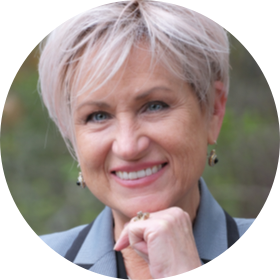 Guest: Shonda Gibson, Senior Associate Vice Chancellor for Academic Affairs, Texas A&M University
Guest: Shonda Gibson, Senior Associate Vice Chancellor for Academic Affairs, Texas A&M University
Dr. Shonda Gibson became Associate Vice Chancellor of the Texas A&M University (TAMU) System in 2018. This followed two years as Associate Provost for Institutional Effectiveness and Research at Texas A&M University-Commerce. She served in a variety of roles at TAMU-Commerce, including Interim Vice President for Student Access and Success, accreditation liaison for the Commission on Colleges of the Southern Association of Colleges and Schools, Executive Director for Institutional Effectiveness and Research, and Executive Director for Global Learning and Quality Enhancement Plan. Dr. Gibson also served on the Texas Affordable Baccalaureate Program Advisory Committee, where she helped create and implement the state’s first competency-based degree offered by an accredited public institution. Additionally, she led the Institute for Competency-Based Education, a collaborative focused on experimentation and research to advance the understanding of competency-based education. She holds four degrees from TAMU-Commerce: a bachelor’s degree, an MBA, an MS in psychology, and a Ph.D. in educational psychology.
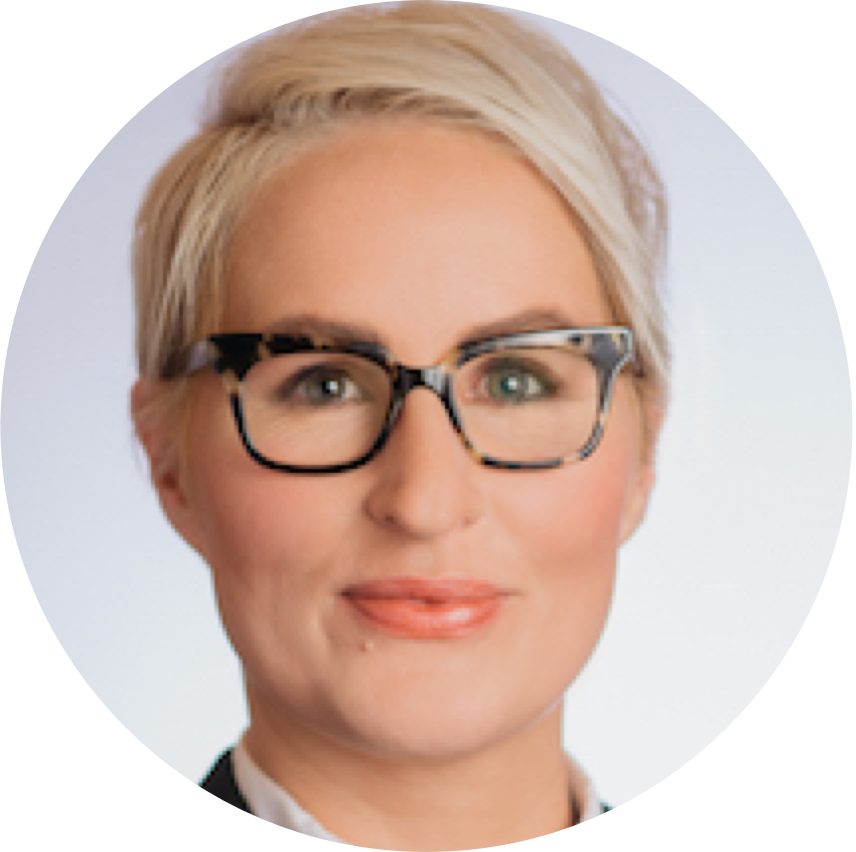 Co-Host: Bridget Burns, CEO, University Innovation Alliance
Co-Host: Bridget Burns, CEO, University Innovation Alliance
Dr. Bridget Burns is the founder and CEO of the University Innovation Alliance (UIA). For the past decade, she has advised university presidents, system chancellors, and state and federal policy leaders on strategies to expand access to higher education, address costs, and promote completion for students of all backgrounds. The UIA was developed during Bridget’s tenure as an American Council on Education (A.C.E.) Fellowship at Arizona State University. She held multiple roles within the Oregon University System, including serving as Chief of Staff and Senior Policy Advisor, where she won the national award for innovation in higher education government relations. She was a National Associate for the National Center for Public Policy and Higher Education, and has served on several statewide governing boards including ones governing higher education institutions, financial aid policy, and policy areas impacting children and families.
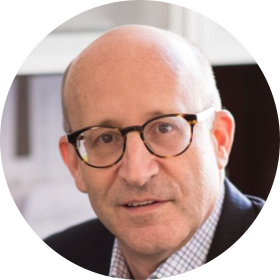 Co-Host: Doug Lederman, Editor and Co-Founder, Inside Higher Ed
Co-Host: Doug Lederman, Editor and Co-Founder, Inside Higher Ed
Doug Lederman is editor and co-founder of Inside Higher Ed. With Scott Jaschik, he leads the site's editorial operations, overseeing news content, opinion pieces, career advice, blogs and other features. Doug speaks widely about higher education, including on C-Span and National Public Radio and at meetings and on campuses around the country. His work has appeared in The New York Times and USA Today, among other publications. Doug was managing editor of The Chronicle of Higher Education from 1999 to 2003, after working at The Chronicle since 1986 in a variety of roles. He has won three National Awards for Education Reporting from the Education Writers Association, including one for a 2009 series of Inside Higher Ed articles on college rankings. He began his career as a news clerk at The New York Times. He grew up in Shaker Heights, Ohio, and graduated in 1984 from Princeton University. Doug and his wife, Kate Scharff, live in Bethesda, MD.
About Weekly Wisdom
Weekly Wisdom is an event series that happens live on Facebook, Twitter, and LinkedIn. It also becomes a podcast episode. Every week, we join forces with Inside Higher Ed and talk with a sitting college president or chancellor about how they're specifically navigating the challenges of this moment. These conversations will be filled with practicable things you can do right now by unpacking how and why college leaders are making decisions within higher education. Hopefully, these episodes will also leave you with a sense of optimism and a bit of inspiration.
Rate, Review & Subscribe
Learn why hundreds of people have rated this new podcast 5 stars! Please join others and rate and review this podcast. This helps us reach and inform more people -- like you -- to help increase the number and diversity of college graduates in the United States.
Click here, scroll to the bottom, tap to rate with five stars, and select “Write a Review.” Then be sure to let us know what you loved most about the episode! Also, if you haven’t done so already, subscribe to the podcast. We’ll be adding a bunch of bonus episodes to the feed and, if you’re not subscribed, there’s a good chance you’ll miss out.

